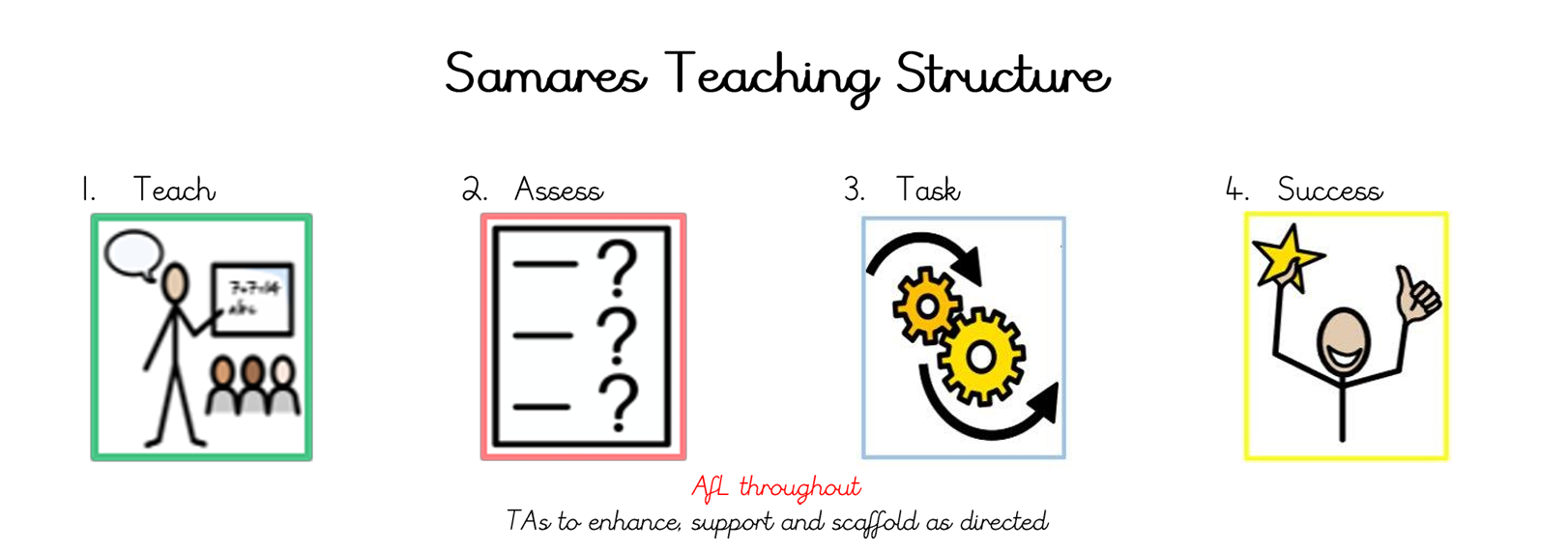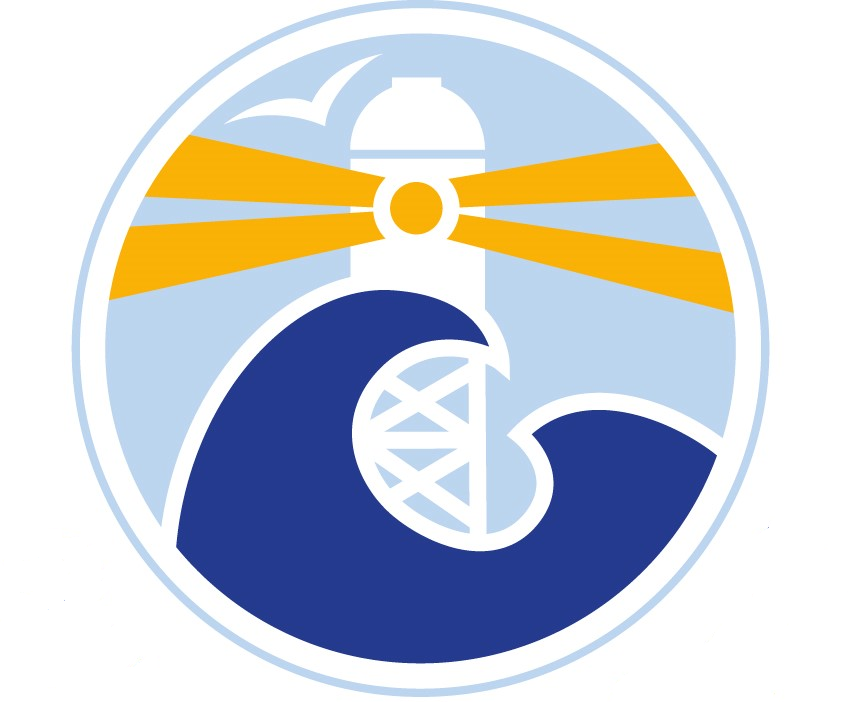Samares Lesson Structure
Our vision is for Samares School to be an inclusive and adaptive learning environment where teachers respond dynamically to the unique needs of all children.
Teachers plan structured lessons which ensure curriculum content is delivered in a highly effective and meaningful way. Teachers make ‘in-the-moment’ decisions to ensure children make progress in their learning, and prioritise positive learning behaviours to empower students to thrive.
Our goal is to ensure that all children make consistent progress by teachers providing targeted support to meet the diverse learning needs of children at Samares School.
Samares Teaching Structure:

At Samares, we have developed a structured four-part lesson model (Teach, Assess, Task, Success) grounded in educational research to support staff in planning and delivering high-quality lessons. This framework ensures that lessons are purposeful and consistent, aligning closely with our teaching and learning policy. By embedding this model into daily practice, we promote a shared approach to teaching that enhances student outcomes and supports professional growth across the school.
This structure can be viewed in two ways:
 Teach – Explicit, direct instruction of the lesson objective
Teach – Explicit, direct instruction of the lesson objective
This structure begins with a hook to engage learners, connect prior knowledge, and make content relatable. Hooks are inclusive, scaffolded, and designed to maximize learning time, with high expectations for oracy. Teachers check understanding of prior learning and adapt teaching accordingly.
The Learning Objective (L.O.) and Success Criteria (S.C.) are shared clearly with both children and adults, ensuring everyone understands the purpose and pathway to success. A vocabulary instruction supports language development through careful selection and effective instruction of key terms.
New concepts are explicitly taught in small chunks with clear instructions by the teacher and comprehensive modelling. Consideration is given to cognitive load - using visuals, displaying key words, and structured explanations.
Assess – The hinge point of the lesson
Formative assessment is used to improve learning by providing feedback to both teachers and students. Teachers assess understanding of the objective taught in the Teach phase, using one of the 12 AfL strategies. Based on this feedback, teaching and tasks are adapted to meet learners’ needs.
Task – Time for children to practise the objective
Children engage in independent, focused learning tasks. These are designed to be low-floor, high-ceiling, allowing all learners to access and extend their understanding. Tasks are scaffolded and structured to support adaptive teaching, with thoughtful groupings and ongoing teacher support.
Success – Celebrating achievement
This final phase reflects on whether the objective has been met. Teachers and students review learning against the success criteria, mark work, identify next steps, and celebrate achievements—reinforcing progress and building confidence.
Deployment of Learning support Assistances (LSAs)
Throughout the four-part lesson structure, teachers take deliberate steps to ensure that all pupils are supported both cognitively and emotionally. This includes identifying and responding to individual needs related to attention, working memory, emotional regulation, and engagement. Teachers communicate these needs clearly to support staff, ensuring that Learning support Assistances (LSAs) are effectively deployed to reinforce adaptive teaching strategies.
Support staff are guided to:
- Provide targeted scaffolding during input and independent tasks.
- Use regulation strategies and language aligned with classroom expectations.
- Monitor and respond to signs of cognitive overload or emotional distress.
- Facilitate inclusive participation, ensuring all pupils can access learning meaningfully.
This collaborative approach ensures that adaptive teaching is consistently embedded across the lesson, promoting a supportive and responsive learning environment.
